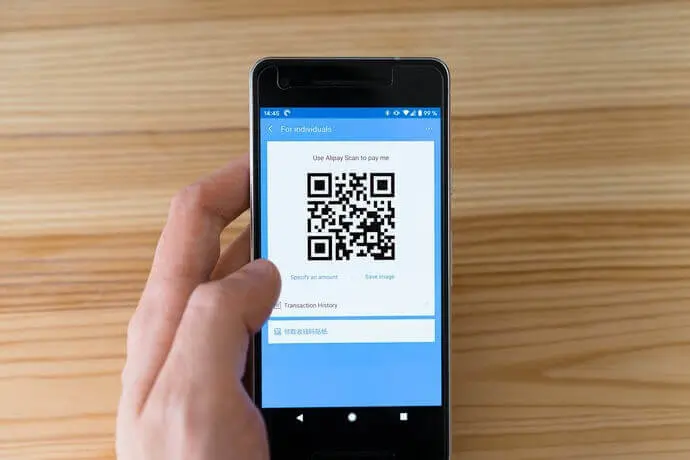You are probably a business that wants to utilize QR Code-based mobile payments for customers. And it makes sense.
According to Fortune Business Insights, the mobile payment market is projected to soar. If we go by statistics, it’s forecast to go to USD 11.83 trillion in 2028 at a CAGR of 29.1% from 2021 to 2028.
So you’re looking for a suitable best QR Code generator to help you create QR Codes to receive payments via payment links.
But here’s the thing—you want QR Codes in bulk. Here, each one should be generated in real-time for your end-users. And to do that, you can’t head on to your QR Code generator every time you need to create a QR Code.
So you’re looking for a suitable QR Code API provider. Here, your mobile application or information system will send an API request whenever a QR Code is needed. In return, the API will send the required QR Code in real-time to the end-user.
In this article, we’ll discuss in detail how QR Code API can be used for mobile payments.
A. QR Code API for payments—a brief
QR Code is a cost-effective and viable mode of payment. It not only allows you to receive payments but also initiate one.
And to enable QR Code payments in your app or system, you just need to get the following set-ups in place:
- QR Code scanning: You can utilize an open-source JS library. Or you can also consult a software developer to read QR Codes. Since it is too technical, hiring a software developer is a smart choice
- QR Code generation: For this, you can use QR Code API. It’ll help you to generate QR Codes programmatically in real-time via your information system or mobile app
- Payment gateways: You can use any gateway to initiate a money transfer via a payment webpage. It could be Stripe, Razorpay, PayU, or any service provider of your choice
Once you have decided on all of them, you can begin offering secure online money transfers. And here’s how you can proceed to do it:
- You integrate QR Code API into your system or mobile app
- Here, you add the link generated via the payment gateways into the QR Codes
- Once done, you can show the QR Codes to customers for making the payment
This way, you can offer your customers a better mode of payment.
Related : How To Make QR Code For App Links
B. Popular use cases of QR Code Payment API
Businesses have options on how they wish to process QR Code payments. This depends on the scale of the business—self-employed, small business, or large retailer.
A. Peer-to-Peer Transactions
This mode of QR Code payment is the most common in mobile app payments. Here, one individual pays another. For example, friends, family members, or self-employed professionals.
Here’s how it works:
- Sam got some repairs done by an electrician (Dean) and needs to pay him $50
- Dean opens the payment app, goes to his profile, and clicks on My QR Code
- Now, Sam opens his payments app and scans this QR Code on Dean’s phone. Next, he authorizes the money transfer
- Once the transaction is complete, both Sam and Dean receive an SMS confirmation. That’s it.
To help you understand it better, here’s an example—WeChat Pay, a common payment service in China. Using it, users can make P2P transactions by scanning QR Codes.
Generate a QR Code For Your Unique Case
START TODAY!
Moreover, it also allows customers to make purchases at participating retailers.
Similarly, Popular mobile payment services such as Paypal and Paytm also allow P2P transactions via QR Codes.
In fact, many Banks are have also started allowing P2P transactions through their apps. This is to make it easy for account-holders to transfer money.
2. Buyer-to-Large Merchant Transactions – Buyer Scans
This applies to large retailers such as supermarkets. Here’s how it works:
- Let’s say Sam is a buyer at a Target and has bagged items worth $500
- He now goes to the cashier for checkout
- The cashier scans each item and generates a bill
- With the bill, he also generates a unique QR Code on a screen
- Sam opens the payments app on his smartphone, scans the QR Code, and authorizes the payment
- The cashier gets a notification that Sam has made the payment and prints the sale receipt
Paypay—a joint venture of Softbank and Yahoo Japan—offers this system.
Users just need the Paypay app on their phones. The app offers an option to select a payment method between credit card and electronic money.
Stores have merchant QR Codes to receive payments. Customers can scan this QR Code with the Paypay app to make payments.
3. Buyer-to-Small Business Transactions
This mode of QR Code payments applies to small businesses and retail outlets. And this is how the process works:
- Rachel picks up items worth $10 at a small store
- The cashier requests her to make a payment and points at a QR Code near the billing desk
- She opens the payments app, scans the QR Code, enters the amount, and authorizes the payment
- The cashier gets confirmation via SMS
Note that in this case, the buyer enters the amount and the merchant has a permanent QR Code. This QR Code helps the buyer app identify the merchant account.
C. How to generate QR Codes via API
Now you know how QR Code API works for payment. The next question is—how to create one?
1. Select payment gateway
You need to select a payment gateway that initiates a money transfer via a payment webpage. It can be Stripe, Razorpay, and PayU.
2. Find a QR Code API
Now, you’d need a QR Code API. You can head on to any search engine and type the query. It may fetch you many options to choose from.
But going through all the search results to find the best one is a tedious process. For your convenience, here is a detailed comparison of the best QR Code API available online. This will help you make a sound decision smoothly.
3. Create QR Codes
To do that, you’ll need a suitable QR Code API provider. Using Scanova’s QR Code API, here’s how you can create QR Codes for payment:
1. Go to QR Code API and sign-up for the free trial
Here, you will get the first 50 API requests for free when you sign-up. Also, you’ll need to enter your card details while signing up.
2. On the page that loads, you’ll see your cycle usage with details such as total allowed requests, requests used, and days remaining. Here, you’ll also see the option Get API Key. Click on Create to see your API Key
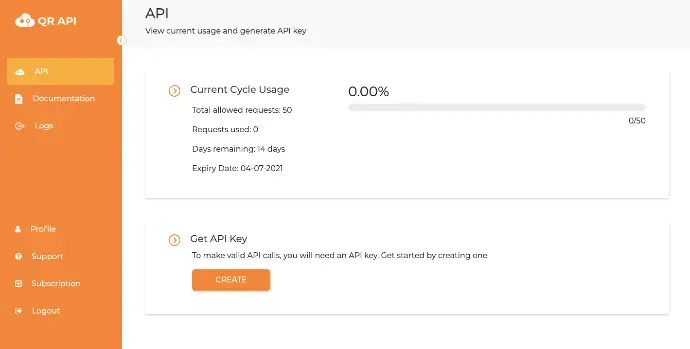
3. Copy the API key and click on Documentation on the dashboard
4. As you scroll down, you’ll see the Authorize button on the right
5. Click on the Authorize button. A window will open prompting you to paste the API key in the value box. Once you’ve pasted it, click Authorize
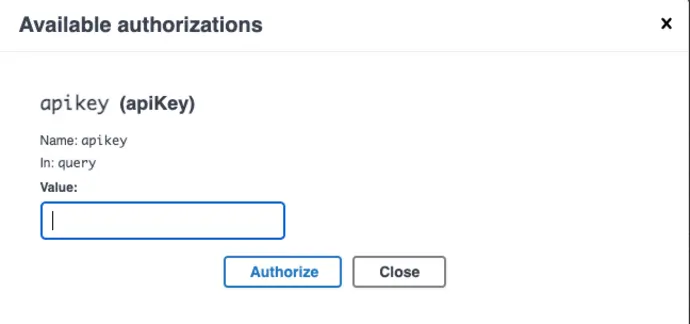
6. Select the Website URL QR Code category and click on the Test button
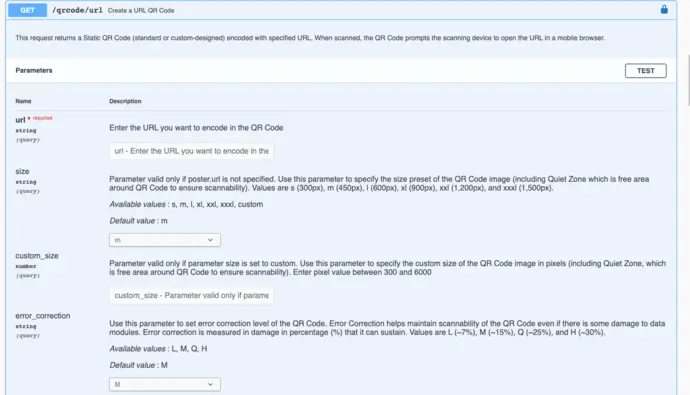
7. Add the payment links that generate via payment gateways in the QR Code. You can also start customizing the QR Code here
8. Next, you can specify the level of error correction and other design parameters
9. Once you’ve finalized the QR Code content and other parameters, click on Execute
10. Here, you’ll see various responses such as Curl, Request URL, and Response Body. When you scroll down a little, you’ll also see the image of a QR Code with encoded content
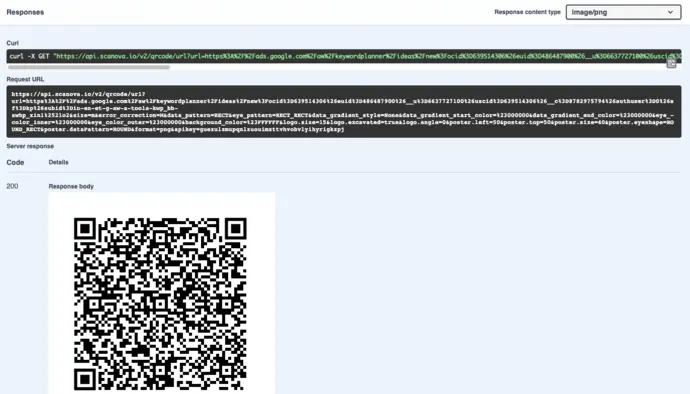
11. Now copy the Request URL and integrate it into your information system or mobile application
That’s it. QR Codes will be generated as the number of response URLs are sent to the API system.
Please note that QR API doesn’t support QR Code payments. It only allows you to create QR Codes to link users to payment gateways.
That is all you need to know about how QR Code API for payment. You can now go ahead and generate your own QR Codes for smooth payment.
Generate a QR Code For Your Unique Case
START TODAY!
